
 1 / 11
1 / 11A bronze sculpture by Italo Griselli, known under the Fascist regime as "Saluto Fascista" (Fascist Salute) and after the war renamed Genio dello Sport (Genius of Sport), stands at the entrance of a fascist architecture building in the EUR neighbourhood, in Rome. Mussolini transformed Rome’s urban landscape with grand construction projects like EUR, a new city district that was originally designed as a celebration of fascism for a world fair in 1942. The fair was cancelled due to WWII and construction was halted but resumed after the war. (AP Photo/Andrew Medichini)

 2 / 11
2 / 11A view of the Palazzo della Civilta' Italiana, also known as the Square Colosseum, in the EUR district of Rome. On its façade is engraved a phrase from Mussolini's 1935 speech announcing Italy's invasion of Ethiopia. (AP Photo/Andrew Medichini)
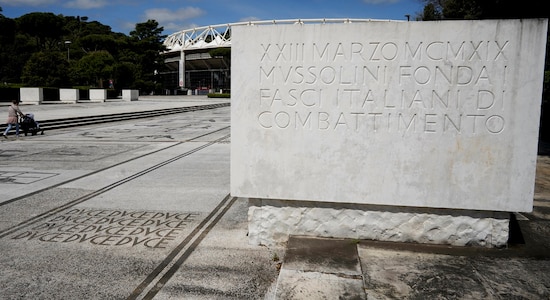
 3 / 11
3 / 11The word DVCE, which was Benito Mussolini's title, is written on the mosaic pavement of The Piazzale at the Foro Italico sporting complex in Rome, next to a plaque commemorating the founding of Mussolini's Fasci Italiani di Combattimento (Italian Fighting Fasces) on March 23, 1919. The Foro Italico, formerly called Foro Mussolini (Mussolini's Forum) was built under Mussolini's regime to bolster Rome's bid for the Olympics in the 1940s. (AP Photo/Andrew Medichini)
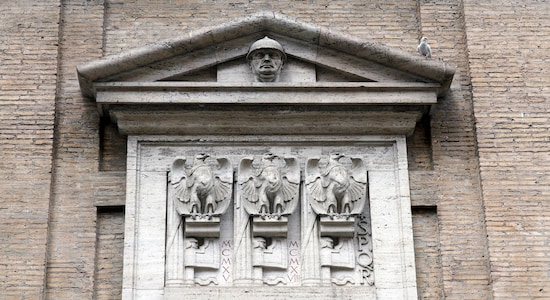
 4 / 11
4 / 11Fasces, the original symbol of Fascism adapted from ancient Rome, showing a bundle of rods tied together around an axe, are seen carved with eagles on the facade of the Madonna dei Monti church, above a plaque commemorating the fallen soldiers of WWI, in downtown Rome. (AP Photo/Andrew Medichini)
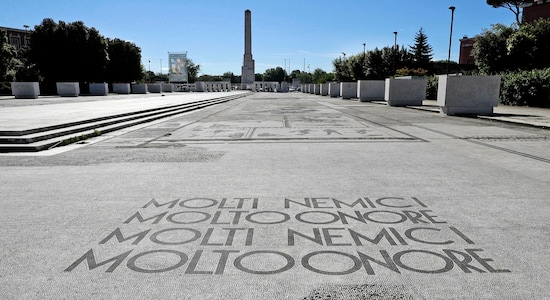
 5 / 11
5 / 11A Fascist motto reading in Italian "Many enemies, much honour", decorate the mosaic pavement on the avenue from the Olympic stadium to a fascist-era obelisk, in Rome's Foro Italico sporting ground. The Foro Italico, formerly called Foro Mussolini (Mussolini's Forum), was built under Mussolini's regime to bolster Rome's bid for the Olympics in the 1940's. The obelisk was built in 1932. (AP Photo/Gregorio Borgia)
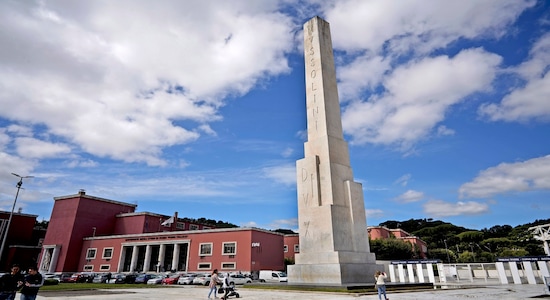
 6 / 11
6 / 11A marble obelisk by architect Costantino Costantini with writing reading in Latin MVSSOLINI DVX (Mussolini Leader) stands at the Foro Italico sporting complex, formerly called Foro Mussolini (Mussolini's Forum), in front of the Olympic Stadium, in Rome. It is one of the few public references to Mussolini which remained after WWII. The Foro was built under Mussolini's regime to bolster Rome's bid for the Olympics in the 1940s, the obelisk was built in 1932. (AP Photo/Andrew Medichini)
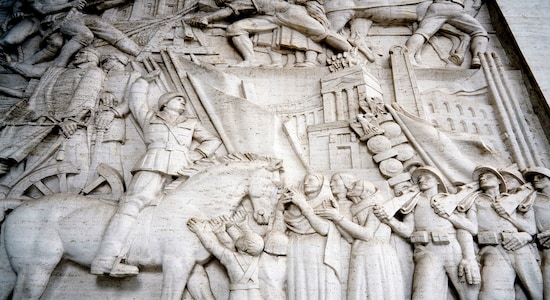
 7 / 11
7 / 11A detail of a giant marble bas-relief titled "The Story of Rome through its Constructions", made in 1940 by sculptor Publio Morbiducci, shows Italian dictator Benito Mussolini on horseback, at the entrance of a building in the EUR neighbourhood of Rome. Mussolini transformed Rome’s urban landscape with grand construction projects like EUR, a new city district that was originally designed as a celebration of fascism for a world fair in 1942. (AP Photo/Andrew Medichini)
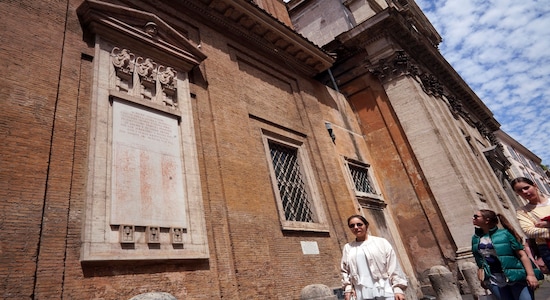
 8 / 11
8 / 11People walk past a plaque commemorating the fallen soldiers of WWI adorned with the original symbol of fascism, a bundle of sticks featuring an axe, carved along with eagles on the facade of the Madonna dei Monti church, in downtown Rome. (AP Photo/Andrew Medichini)
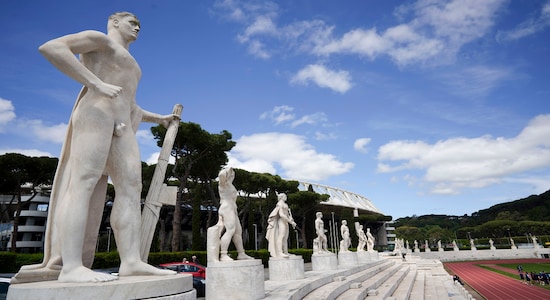
 9 / 11
9 / 11A marble statue holding a fasces, a bundle of rods tied together around an axe, adopted by Italian dictator Benito Mussolini as a symbol of power, adorns the track and field Stadio Dei Marmi stadium of the Foro Italico, in Rome. The Stadio Dei Marmi was designed by architect Enrico Del Debbio and completed in 1928. (AP Photo/Andrew Medichini)
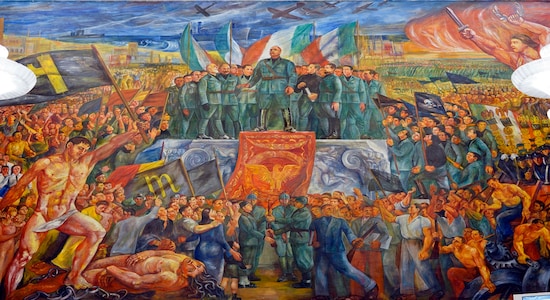
 10 / 11
10 / 11A detail of the mural titled "Apotheosis of Fascism", by Luigi Montanarini, believed to have been painted between the late 1930s and early 1940s, in the Salone d'Onore of the CONI headquarters, in Rome. (AP Photo/Andrew Medichini)
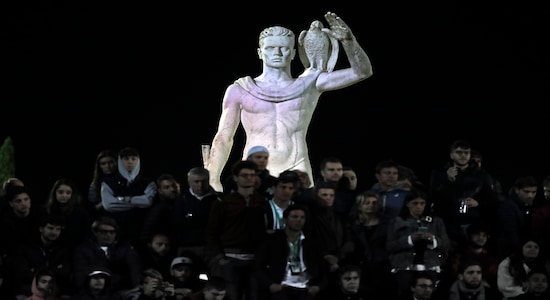
 11 / 11
11 / 11One of the statues by sculptor Eugenio Baroni adorns the Pietrangeli tennis stadium behind spectators watching a match at the Italian Open tennis tournament, in Rome. The tennis stadium is part of the Foro Italico sports complex, which was initially called Foro Mussolini (Mussolini's Forum). It was built under Benito Mussolini's regime to bolster Rome's bid for the 1944 Olympics, which never took place. (AP Photo/Andrew Medichini)

